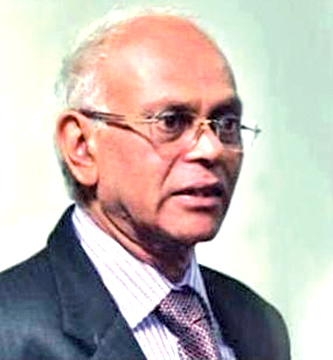Sri Lanka should have continuously high economic growth policies with special focus on fair income distribution and eliminating the regional disparity in incomes, Former Deputy Governor Central Bank, W.A. Wijewardena told the Daily News Finance, responding to a question on World Bank’s latest classification on Sri Lanka as an ‘upper-middle income group’ country.
He added, “To attain this, economic enterprises which are presently located in the Western Province should be distributed to other regions of the country. The Megapolis strategy which presently covers only the Western Province should be extended to the entire country.
The World Bank has assigned Sri Lanka to upper-middle income group from July 1, 2019. Sri Lanka was earlier in the Lower-middle income category.
The World Bank classifies the world’s economies into four income groups — high, upper-middle, lower-middle, and low. Sri Lanka bases this assignment on Gross National Income (GNI) per capita (current US$) calculated using the Atlas method. The classification is updated each year on July 1.
In this interview Wijewardena explains how the new World Bank classification would work as far as the economic and social aspects are concerned.
Excerpts;
Q: What does this mean to the common man?
A: It is not something that is meant for the common man, but the attainment of a stage in the journey of Sri Lanka to become a developed country one day. All the political parties, whether they are centre right or centre left, have the avowed goal of becoming a developed country within a generation that is by about 2045. After independence from Britain in 1948, Sri Lanka remained a developing country for about 50 years due to its low economic growth at about 4% per annum during that period.
It was only in 1997 that Sri Lanka was able to remove this tag from its name and become a lower middle income country, the intermediate state which a country should spend before it becomes a developed country.
Though this was an attainment, it precluded Sri Lanka from tapping the concessionary funding sources from donors; as a result, Sri Lanka had to borrow funds from commercial markets at stringent loan conditions and high interest rates.
Since 1997, there was a slight increase in the annual economic growth rate from the previous 4% to 5%. As a result, Sri Lanka could earn the average income level per person set at US $ 3,996 for it to become an upper middle income country within 22 years in mid 2019. This is an average income assuming that the country’s income is equally distributed among all the people and among all the provinces.
With a high income disparity in which the top 20% earns about a half of the income and the poorest 20% earns only 5% of the income, the majority of the people in the country will not feel that their wellbeing has been actually improved.
Further, as per the regional income distribution data, it is only the Western Province and the Uva Province which have exceeded the income threshold of US$ 3996, meaning that the remaining seven provinces are still in the lower middle income country category. Hence, the present state hides more than it reveals.
Q: What does it mean and help the economy?
A: As I explained in the previous section, it is only a measurement to assess where the country stands today. It simply says that Sri Lanka has passed one of the two hurdles it has to pass in its journey to become a developed country. Since, the present average income per person is about US $ 4,000 per annum; Sri Lanka now has to take a viable and sustainable development strategy to reach the income level of about US$ 12,000 as early as possible to join the rich country club.
It requires Sri Lanka to increase its present income level by 300 percent and to do so by 2035, the country has to maintain an annual growth rate of 8% on average in the coming 15 years. But, if the growth rate is just 5% as was in the previous 22 years, it will take at least another 25 years for the country to become a developed country.
Q: What are pros and cons attached to the classification?
A: It does not reflect the income disparity among Sri Lankans and among different regions of the country. Hence, when the country attains this type of development, the marginalised people might resist the development process and begin to disparage it with slogans like ‘Colombo and the rich get everything and the rest get only peanuts’. It is against the inclusive prosperity which all the governments are planning to attain.
Q: How should the policies be maintained if we are to get benefits?
A: Sri Lanka should have continuously high economic growth policies with special focus on fair income distribution and eliminating the regional disparity in incomes. To attain this, economic enterprises which are presently located in the Western Province should be distributed to other regions of the country. The Megapolis strategy which presently covers only the Western Province should be extended to the entire country.
Q: What are the immediate minus points - as far as our facilities are concerned such as GSP plus?
A: As far as the global community is concerned, they would welcome Sri Lanka’s graduation to upper middle income country status. We lose the facilities that are extended only to low income countries like GSP + after becoming an upper middle income country.
Further, all foreign funding should necessarily be from non-concessionary sources and hence the rates applicable are high and the conditions are stringent, it is of utmost importance for Sri Lanka to use such funds by adhering to the three Es, namely, Economy, Efficacy and Efficiency.



Add new comment